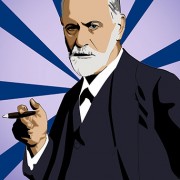The healing and change process envisioned in long-term psychodynamic therapy typically requires at least 2 years of sessions. This is because the goal of therapy is often to change an aspect of one’s identity or personality or to integrate key developmental learning missed while the client was stuck at an earlier stage of emotional development.
Practitioners of brief psychodynamic therapy believe that some changes can happen through a more rapid process or that an initial short intervention will start an ongoing process of change that does not need the constant involvement of the therapist. A central concept in brief therapy is that there should be one major focus for the therapy rather than the more traditional psychoanalytic practice of allowing the client to associate freely and discuss unconnected issues.
The number of professionals who practice an exclusive form of psychodynamic therapy today is a small percentage of psychotherapists. Many psychotherapists use components of psychodynamic theories, however, in their formulation of a client’s issues, while employing other types of psychological techniques (most often, cognitive-behavioral techniques) to affect change in the individual.
References: Haggerty, J. (2013). Psychodynamic Therapy. Psych Central. Retrieved on June 4, 2015, from http://psychcentral.com/lib/psychodynamic-therapy/


